
Thursday was my last day within the arena of gainful employment. It wasn’t a bad job driving people in wheelchairs to their medical appointments, and at times it even felt like a truly useful thing to be doing in the world. And Mario, the owner of the company, was hands down the best and most employee friendly boss I’ve ever had. In fact I’m pretty sure he’s the only one that ever said ‘please’, and he said ‘thank you’ several times a day. Such a small and easy to give gift to give your employees, to show appreciation and not treat them like they were livestock.
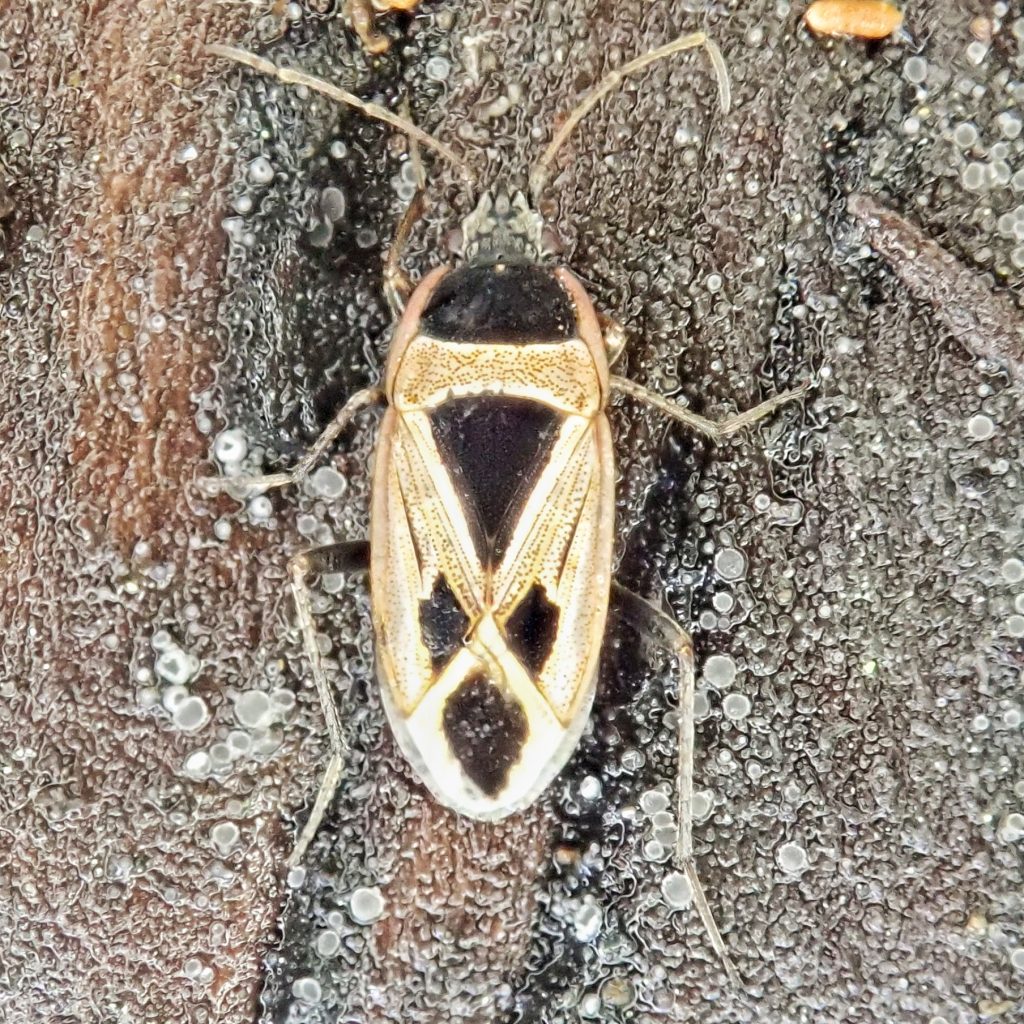
But still, it was a job, and it interfered with my passionate avocation, which is this project and this site, so it had to go. Your average financial advisor would be aghast at my retirement plan, but my needs are simple- food, shelter, Pam, and gas for my van will cover it. I’ll no doubt splurge on ‘Moths of Western North America’ when Seabrook Leckie releases it, and I’ll surely lose other battles for books that I don’t think I can do without. But really, unfettered time is the greatest gift I could give myself, and any material lack (even of books) I may experience is a small price to pay.
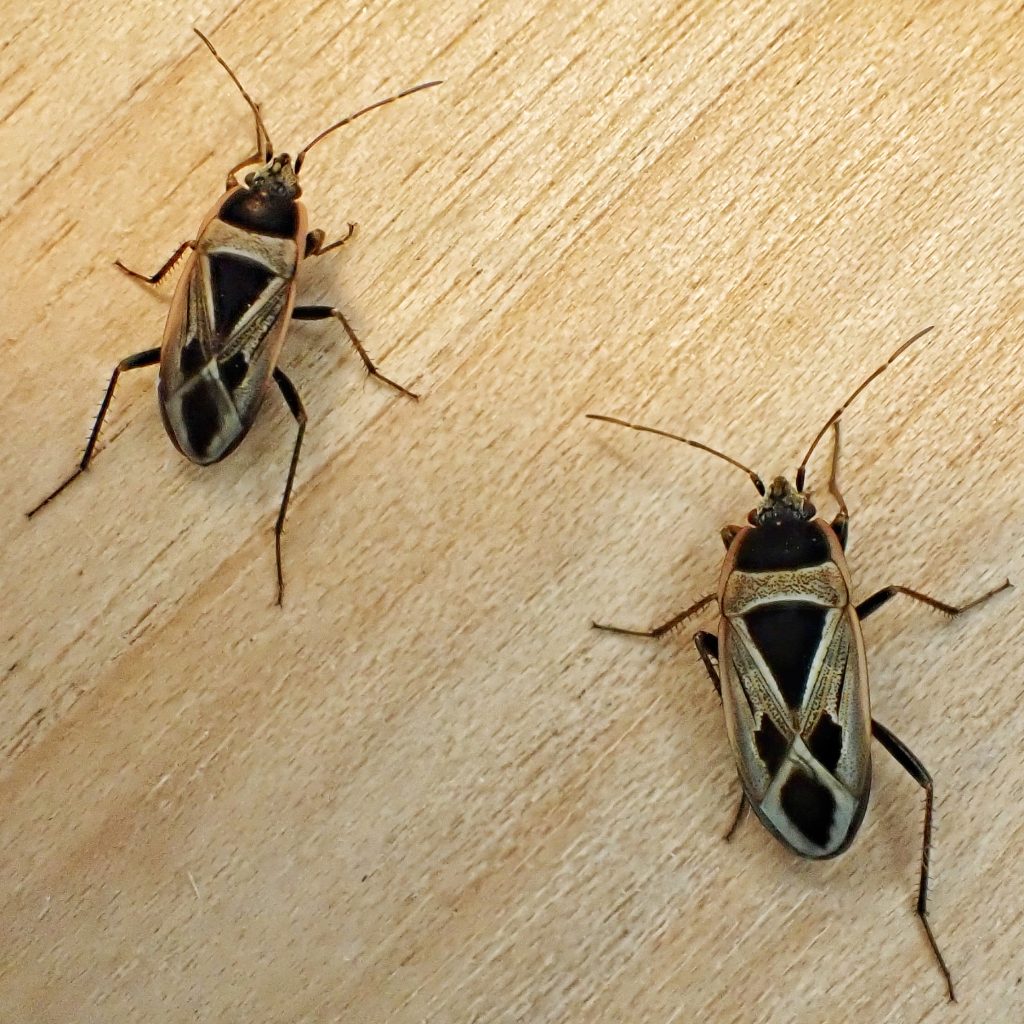
One of the cooler things about that job was that I would frequently have time to kill near a variety of disparate habitats. There are at least a couple dozen profiles that I’ve posted about wild living organisms that I encountered while on the clock. And on my last day I found at least 3 true bugs (order Hemiptera) that are new for this site, and two of those were new to me altogether. But I have previously encountered the handsome little bug Xanthochilus saturnius, although the photos I got at that time were pretty poor.
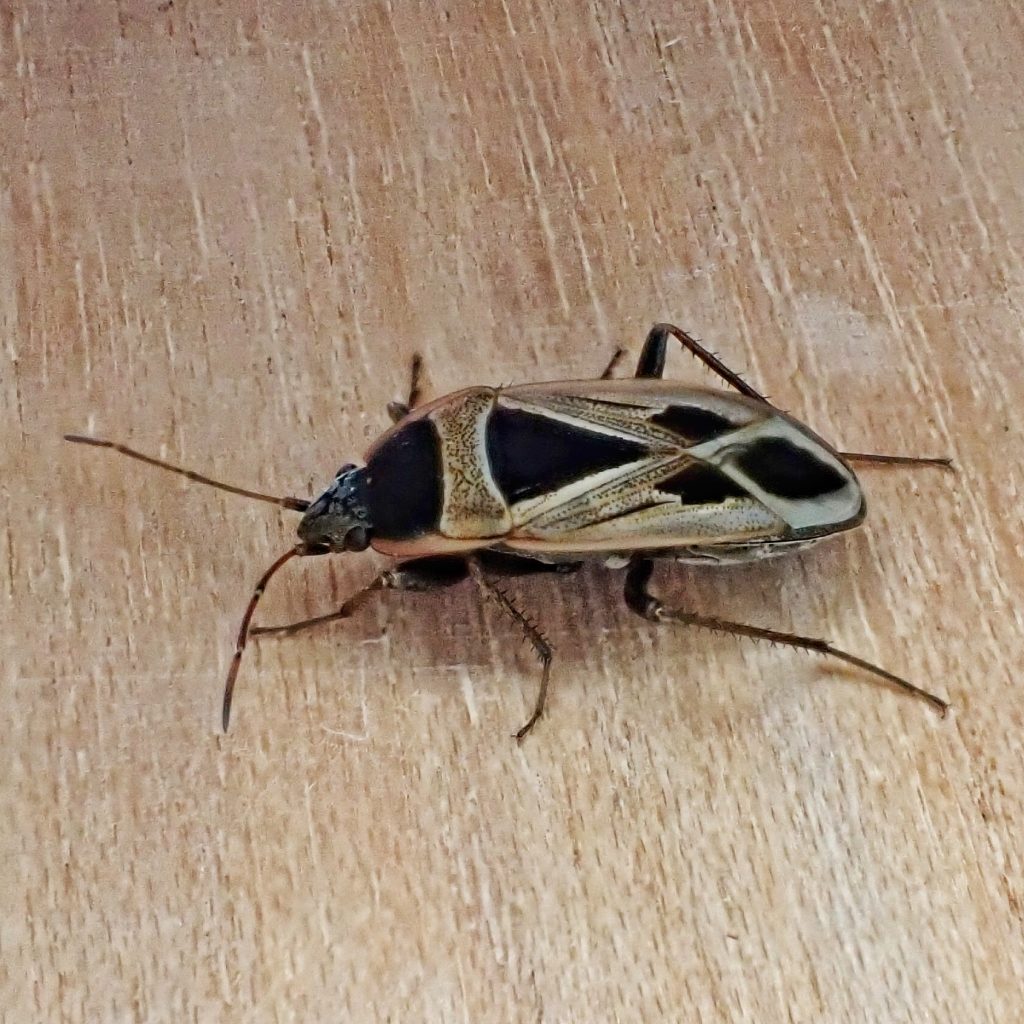
Mediterranean Seed Bugs are members of the family Rhyparochromidae (a rough translation of which is ‘dirt colored’, a prosaic and ill fitting description for these often colorful and nicely patterned critters, but one that has been adapted colloquially as dirt colored seed bugs to describe the family). As the common name for this species suggests they are native to Southern Europe/Northern Africa. They were first found in North America in central California in 1995, and seemed fairly well established in that location. 25 years later they can be found north from there through Washington, and east to Texas.
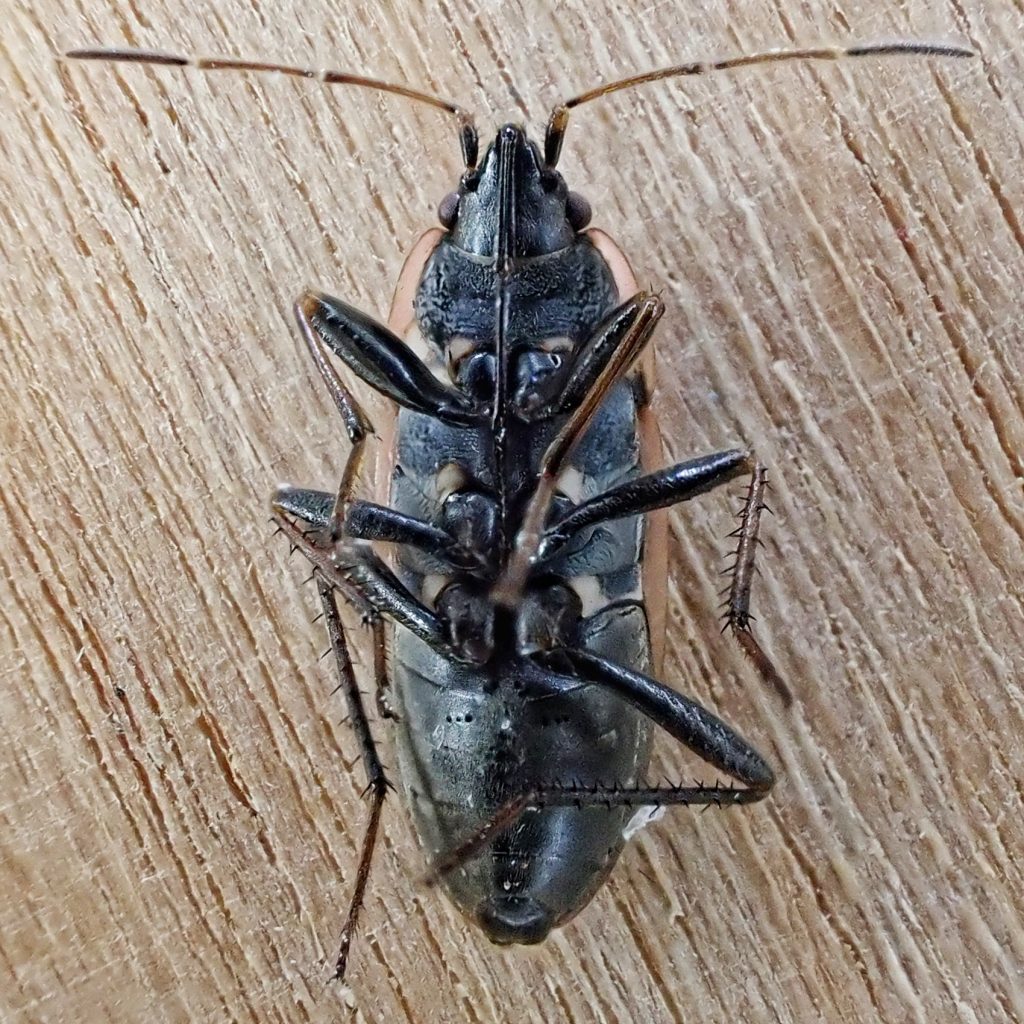
Though they are not native, and can sometimes be found in large numbers, they are not considered to be an agricultural pest, primarily because of their seeming preference for gleaning seeds from the ground rather than from the living plant. They can, however, become nuisance pests, because in very hot dry weather, or in late fall/winter in general, they will seek shelter in our humid, protected homes, sometimes in great numbers. As much as I like bugs, and as handsome as I think Mediterranean Seed Bugs are, even I would be breaking out a broom and dust pan if several hundred invaded my home.

Description-Small (adults 7-8mm long) tan bug with black markings; pronotum has tan margins with black punctures and a large black area in the center; scutellum black with tan borders; hemeleytra tan with black punctures, and black triangles at the inner margin; membrane black, with a translucent border, and the whole is slightly prismatic.
Similar species–Rhyparochromus vulgaris and Raglius alboacuminatus lack complete, light colored lateral margin on pronotum; Eremochoris sp. much darker overall, light colored spots on dark membrane.
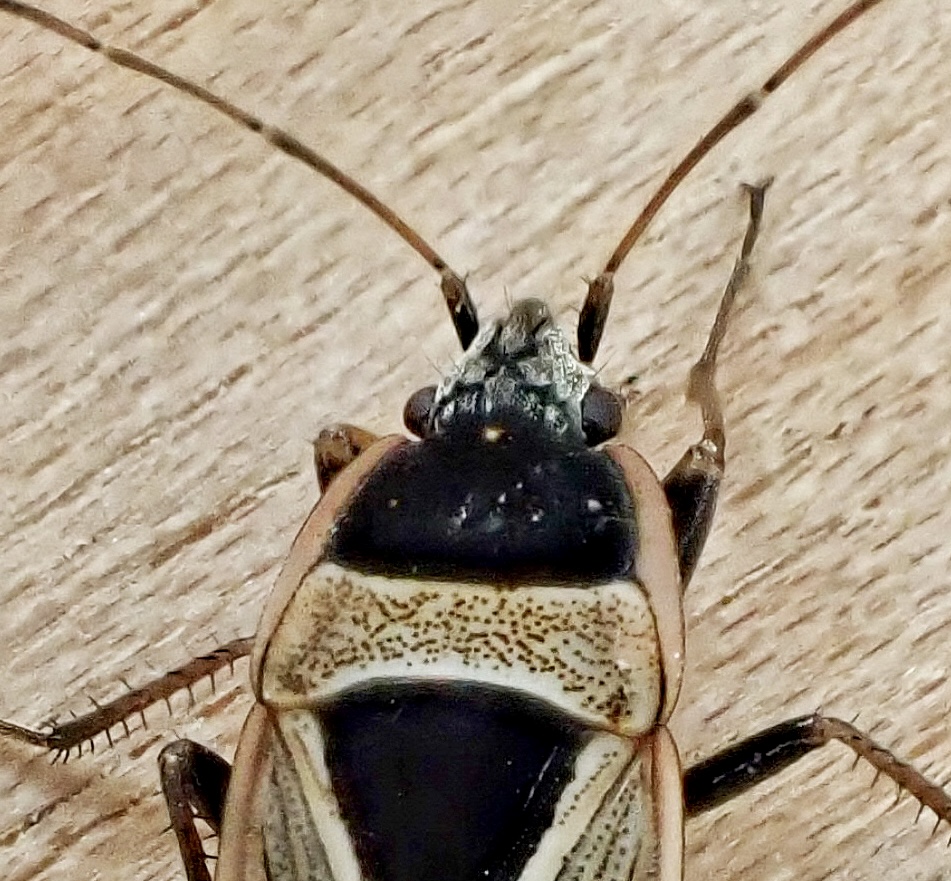
Habitat-Open weedy environments, disturbed ground, and agricultural lands.
Range-Mediterranean native, now naturalized on the West Coast and in sw US; expanding its range and may soon be found region wide, if it’s not already.
Eats– Adults and nymphs eat a wide variety of seeds, with a possible preference for Lamiaceae, Scrophulariaceae, and grass seeds.
Eaten by– Probably preyed upon by insectivores of all classes.
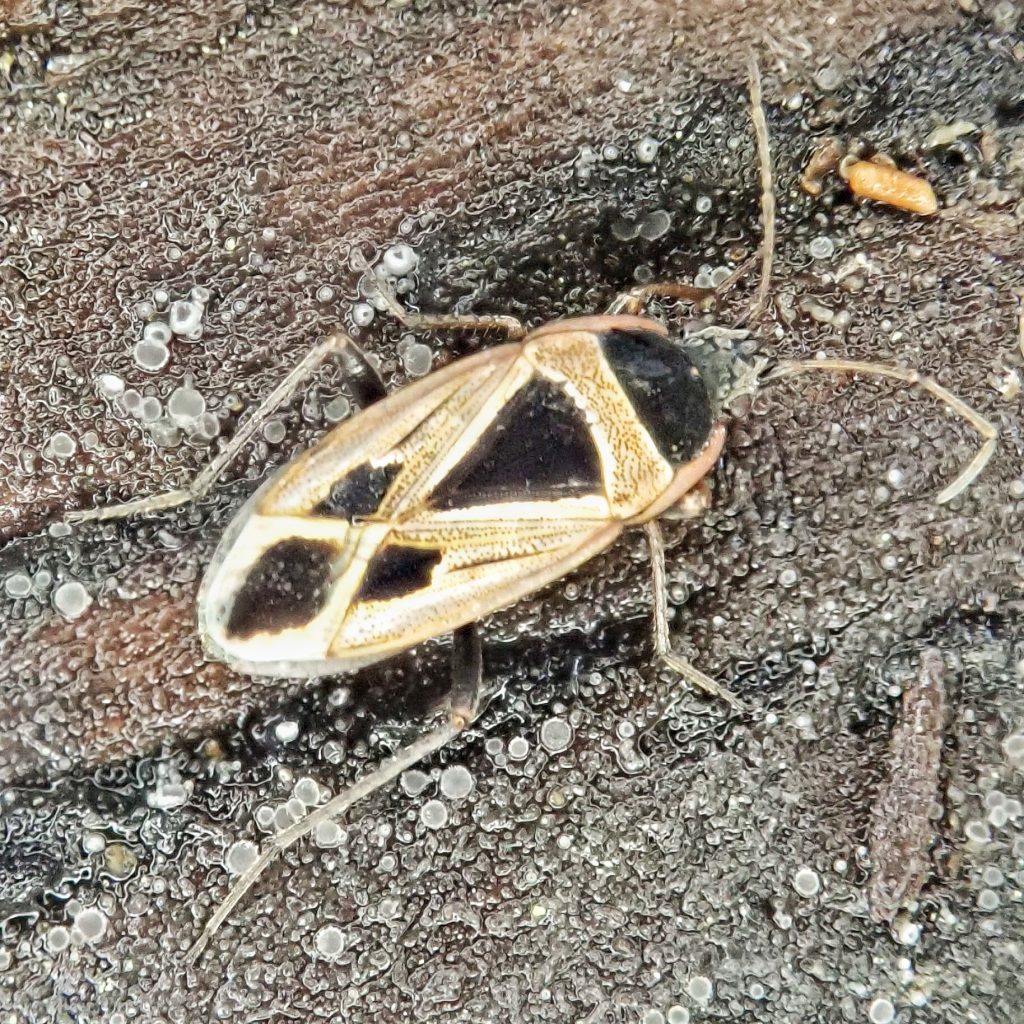
Adults active-Diurnal; primarily March to June and August to October, but may be found under cover every month of the year.
Life cycle-Overwinters under bark and other cover as adults in congregations; probably emerges and mates in spring; eggs probably laid on the ground under cover; after 5 instars adults begin appearing in August.
Etymology of names–Xanthochilus is from the Greek words for ‘yellow fodder’, and presumably refers to this genus’ preference for grass seed. The specific epithet saturnius refers to the Roman deity Saturn, the god of agriculture, specifically seeds.

https://bugguide.net/node/view/102853
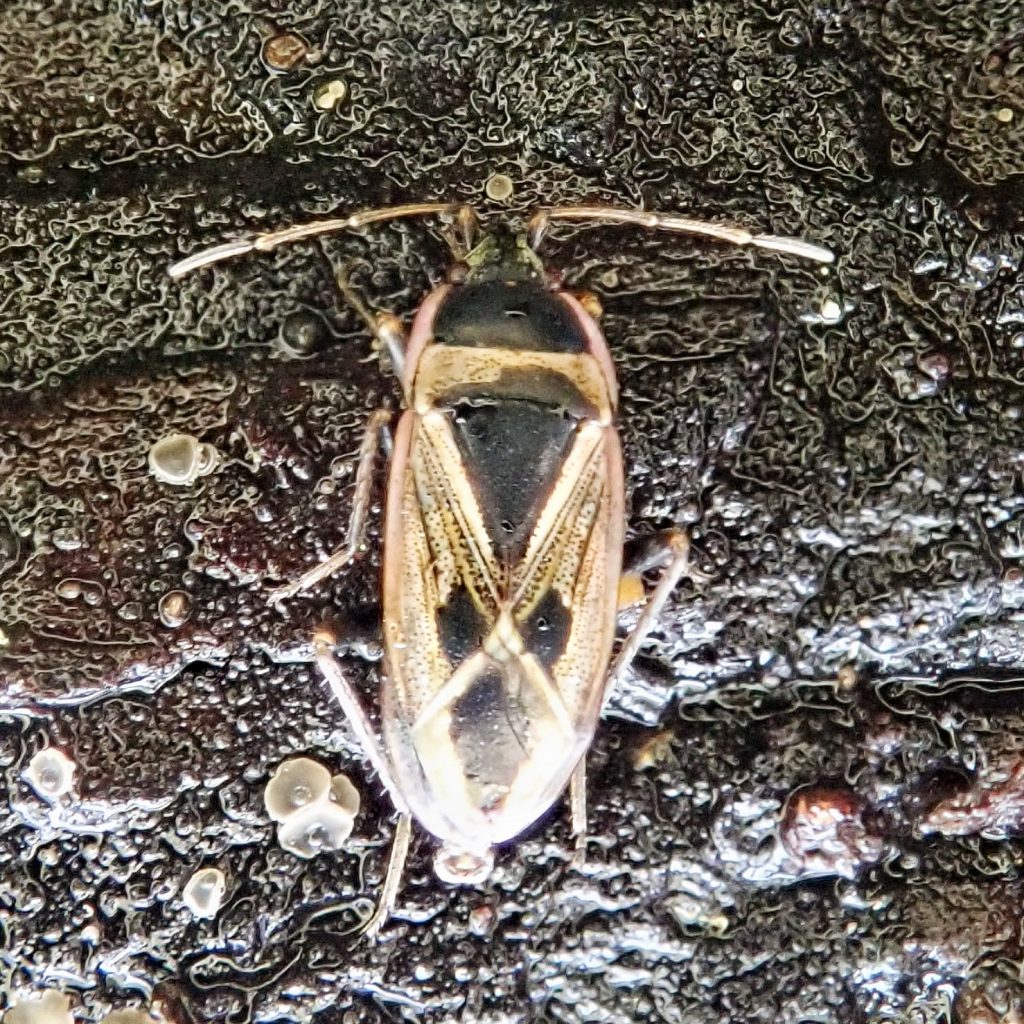
Congratulations on your Retirement & happy commitment to Quality of Life:):) Thank You for sharing yourself in this way:):) I’ happy to know you are in the World:):)
Thank you, Sandra!
Hi Dan
I second Sandra’s warm wishes and further wish you many happy years – decades no less – in your fully engaged yet emancipated state!
Thank you, Trevor!
this looks similar to a bug we have trying to come inside the house in the Fall – tons on the screens trying to come inside BUT instead of tan markings it has red markings… otherwise looks so similar they must be the same type of bug I think.
your decision to leave the job to have time for what you are most interested is admirable… I am in year 9 of a job that I would like to leave soon but if I can make 15 years I get significantly better benefits and incentives… Ive been having trouble deciding if I should retire at my retirement age anyway or keep going another 2 years for the 15 year mark. Its a struggle. Im so tired. But its nice to hear some people go ahead and bravely decide not to toture themselves, lol!
Hi Amanda! Thanks for your affirming words! I’m fortunate that our monthly expenses are not large, and that very little of the travelling I intend to do is outside the PNW, and none of it is off this continent.
As far as your bugs go, I don’t think it is probably X. saturnius, since they are uniformly tan and black. It may be the bug I am going to profile next, hopefully this afternoon. You can always send me in focus, close up photos at recreationalnaturalist@10000thingsofthepnw.com
I may not know what it is but I’ll run it through my process and see if I can figure it out. Thanks again!
I am only slightly hurt at having third billing after food & shelter! 😆🤣☺️
Well, you’re too skinny to provide either food or shelter😏😉🤣